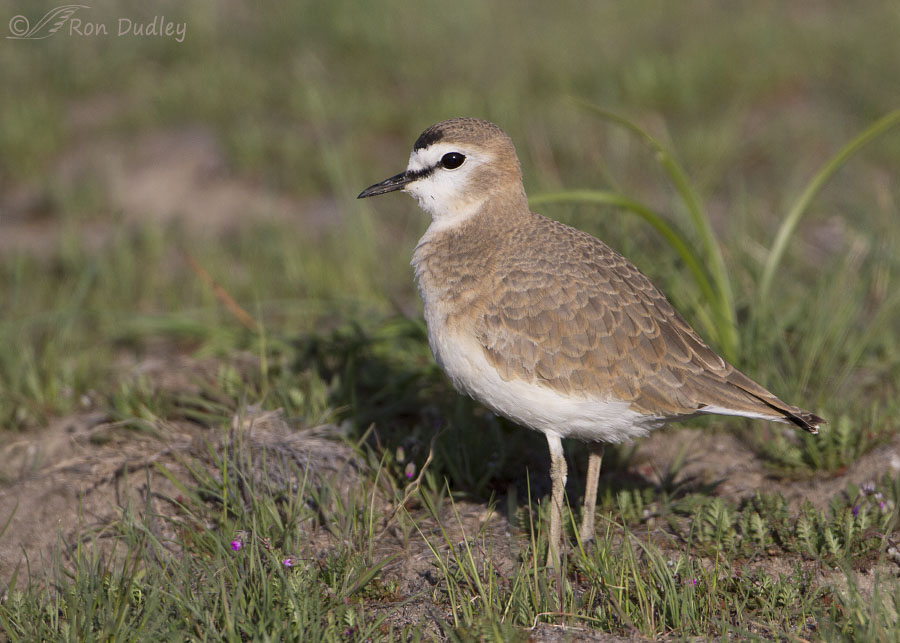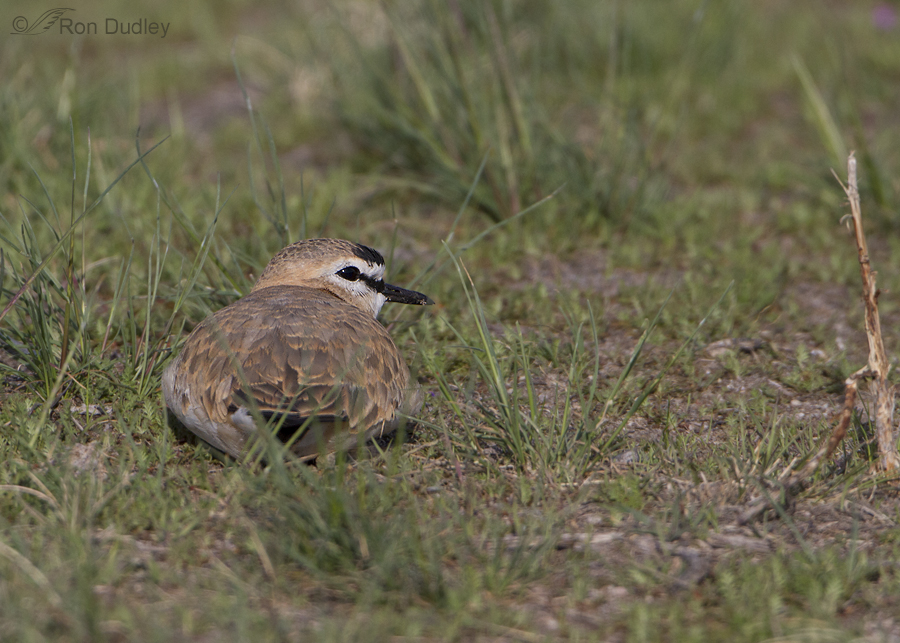Five years ago tomorrow I had one of my most memorable experiences with birds of any species in the field.

1/4000, f/7.1, ISO 500, Canon 7D, Canon EF 500mm f/4L IS II USM + EF 1.4 III Extender, not baited, set up or called in
On the morning of April 10, 2013 Mia and I found a pair of Mountain Plovers on Antelope Island. Mountain plovers are uncommon throughout their range and rare in Utah – these birds were only the 10th confirmed sightings of the species in Utah. After Mia reported them that morning (she spotted them first while I was driving) they understandably created quite a stir among the birding community for a couple of days before they continued their journey to their breeding grounds in places like Wyoming and northern Montana.

1/2500, f/7.1, ISO 500, Canon 7D, Canon EF 500mm f/4L IS II USM + EF 1.4 III Extender, not baited, set up or called in
Mountain Plovers have a reputation for being unwary and highly approachable and these two fit that description perfectly. They were absolutely fearless of my pickup and there were times I thought they were going to disappear beneath it while they were foraging for insects. In stark contrast their reaction to every potentially threatening predator flying overhead (ravens, harriers, gulls and even curlews) was to squat down like this on their tarsi in the grasses and make very little movement as they became as inconspicuous on the ground as possible. Typically they would hold that position for some time after the threat was gone before continuing to forage.
I often say that I’m not a birder in the traditional sense because I don’t keep lists and I almost never chase rarities reported by others but these two dandy little plovers gave me a taste of the euphoric rush and excitement most typical birders must experience when they discover a rare species. It was a feeling I don’t think I’ll ever forget and one I’ve only experienced two other times when Mia and I also discovered a couple of other rare species in northern Utah – a Gyrfalcon along the causeway to Antelope Island and an Upland Sandpiper in Box Elder County. As is typical with rarities I was only able to get documentary quality photos of the Gyr and Upland Sandpiper so I was super-thrilled to get many high quality and aesthetically pleasing images of these rare Mountain Plovers.
Mostly because of rotten weather and miserable light it’s now been almost a week since I’ve been out shooting but as I type this at 3:10 AM (don’t ask…) the forecast calls for sunny skies today so I’m excited to get “out there” again. It’s been much too long.
Who knows, maybe there’s another rarity on my near horizon. Highly unlikely but I’ll confess that the possibility did enter my semi-consciousness at this hour of the morning…
Ron


What a charmer. Love the hunkered down shot too.
And applaud your decision not to announce where rarities can be found. Sadly we are often (on our good days) an inconsiderate species.
“Sadly we are often (on our good days) an inconsiderate species”
Boy, that’s for sure! As time goes by I become more convinced of that sad fact, including among the birding and bird photography community.
Always fun to see a new find, but even better to get good photos. Great shots Ron. Don’t recall ever seeing a Plover.
Everett Sanborn
Prescott AZ
PS: Hope your health situation is rapidly improving.
Thanks, Everett. In many ways I’m doing noticeably better.
WOW! What beautiful images of a cool little bird! And hooray that you captured these little beauties. I know if it were me, I’d be hesitant to report it’s existence and location. While it’s fun to share cool things with folks of like mind, some of those folks aren’t as respectful as they should be. Thankfully, I haven’t had to make that call yet.
I’m really struck by the squatting-on-the-ground-and-disappearing-into-the-cover defense mechanism. Redtails use the same mechanism when they have a meal in talons and a golden eagle is cruising the skies. You would not believe just how flat they can get–it seemingly defies all laws of physics. Obviously, our laws don’t pertain to birds 😉
On the upside, 3:00 a.m. is generally quiet and serene and a good time to get things done, but if you’re up because of pain, which I suspect as a likely cause in this instance, not so much. I’ve been wondering how cranky you’ve been behind the blog having been grounded for so long. I’ll bet it’s not pretty for either you or Mia, especially when it’s combined with pain!! I’m betting that you’re reasonably grumpy 🙂
“I’d be hesitant to report it’s existence and location”
Interesting that you should mention that, Laura. Actually I decided some time ago that I would no longer report rarities except on my blog and location will never be disclosed. I’ve made that decision for more reasons than one…
I actually woke up this morning at 1:15 and never went back to sleep. But the reasons aren’t really so ominous. I suspect there were two of them: 1. I’m one of those weirdos that will wake up in the middle of the night just to see if I have anything to worry about. If I don’t I fall right back to sleep. If I do I lay there and stew about it for hours. And hours. Stupid! 2. I have cluster headaches which I have to take prednisone for when I’m in the middle of a cluster, as I am now. Prednisone is notorious for interfering with sleep (among many other nasty side effects…)
Predisone is both evil and wonderful. Simultaneously. I hope you can get past the need for it. Soon.
That would be nice, EC. I can’t get the new vaccination for shingles until I’ve been off of it for several weeks.
Eesh, Ron. I’m so sorry. I’m with EC; Prednisone can be a blessing and a curse.
I have to admit that I’m not fond of the “yeah, but I just want…” argument. I’ve been known to use the reply, “Yeah, but the birds’ safety and serenity are far more important to me than your whiny butt!” I’m not very civilized at times and that reply can contain a string of expletives that even sailors don’t know.
As for the worry, you know that’s energy better spent doing a host of other far more productive things 😉 And yeah, I know the prednisone stuff. Sadly, it’s the magic silver bullet for RA pain. I took it for years before I knew most of its problems. Not taking it now, but sometimes I yearn for its pain relief.
These are such cute little guys…so happy for you that you were able to see them and experience them, much less photograph them…I wonder why some birds are so much less timid than others…like these birds, chickadees, etc.
It does make one wonder, doesn’t it, Patty!
Fabulous shots! The thrill of the rare find definitely comes through in today’s post. Here’s hoping you and Mia have some luck today. I’d be happy seeing anything through your lens. 🙂
We actually did have some luck this morning, Marty – with several subjects, not all of them birds… It was a fun morning.
Great find and shots Ron!
Charlotte
Thanks, Charlotte.
I have to admit I look forward to when you post Mountain Plovers. A rare bird is “euphoric” at any time, and capturing one to camera has to be a highlight, birder or not! Love looking at your shots.
Although I know you primarily photograph birds, I can’t help looking forward to the day you capture weasels again. Your post a few years back of the phenomenal pictures of a weasel have stayed in my head as being an apex in nature photography. I’m sure you would find something wrong with them, but to me they were fantastic! Weasels have always, but for one time, evaded me, same with mink. Neither has my lens been successful. Someday, if I live long enough.
I’d LOVE to have a productive session with weasels again, Dick. I’ve had aa couple of them but those little devils are elusive and fast so it hasn’t happened for a while now. My readers will be among the first to know about it if and when it does happen!
“3:10 AM (don’t ask)…………….?
Glad you didn’t, Frank… 🙂
The ARE pretty little birds………:) Always cool to find an unusual species to your area. I have seen them upon occasion tho Killdeer are the ones common here. Was doing a bit of reading on them just now and it was noted they use prairie dog towns – we have one of those near by – wonder if there are some there?
Interesting that you’d mention the killdeer as another plover, Judy. This species is unlike most other plovers because it lacks the black bands across the chest like the killdeer has.
That is a beauty! Perfect photos! I can just imagine the excitement you felt. I have never experienced finding a rare species like that but it must be multiplied a hundred times over the feeling one has when seeing a first ever in the traditional sense. A side question…what is the tiny pink flower in the first picture?
Kathy, that flower is commonly called redstem filaree, though it also has several other common names. They’re tiny but incredibly prolific and some of the hillsides on the island actually look purple from a distance because of them right now.
Beautiful shots, as per usual Ron! Were they a mated pair or just two animals staging their migration?
I never could be sure if they were a mated pair or not, Xavier. I suspect they were but couldn’t confirm it. One of these birds had more color in it than the other but BNA says that happens in individual birds, implying that it’s independent of sex.